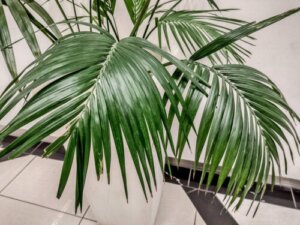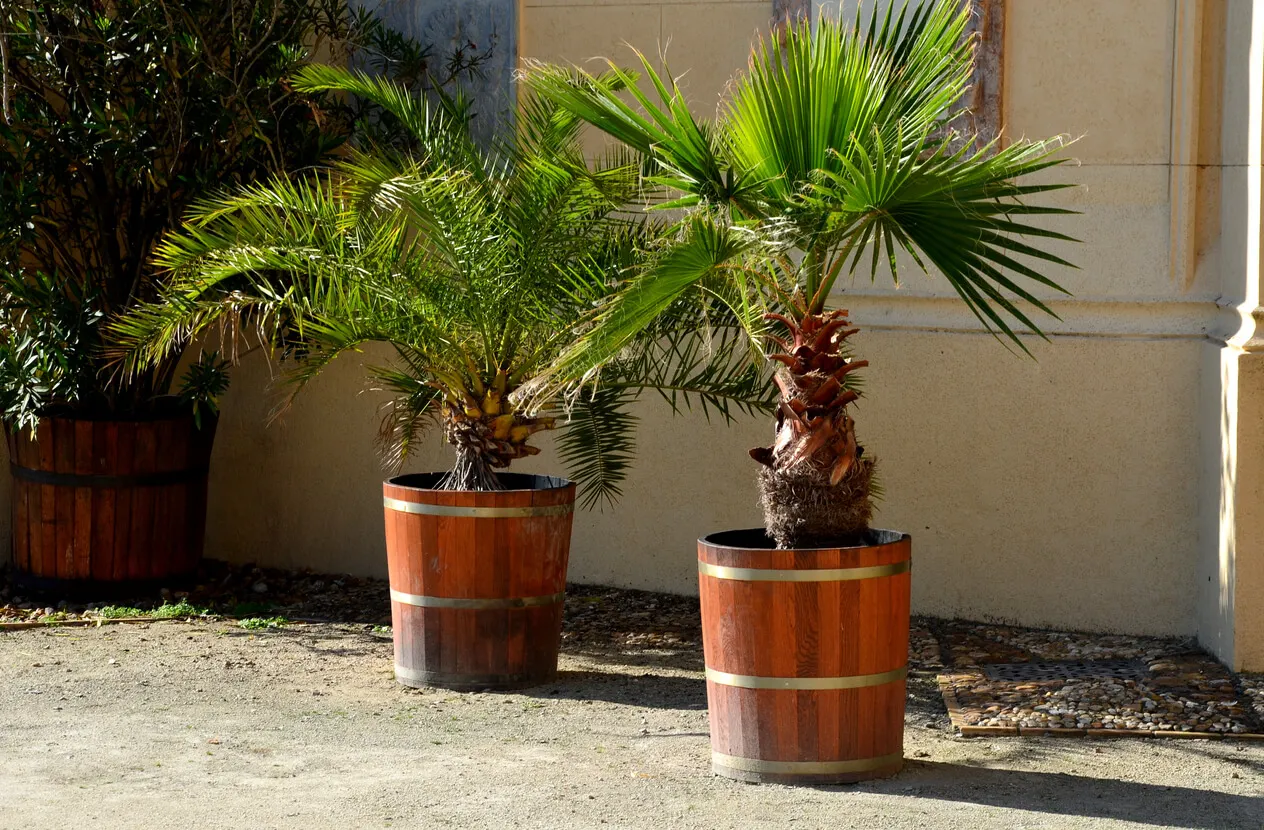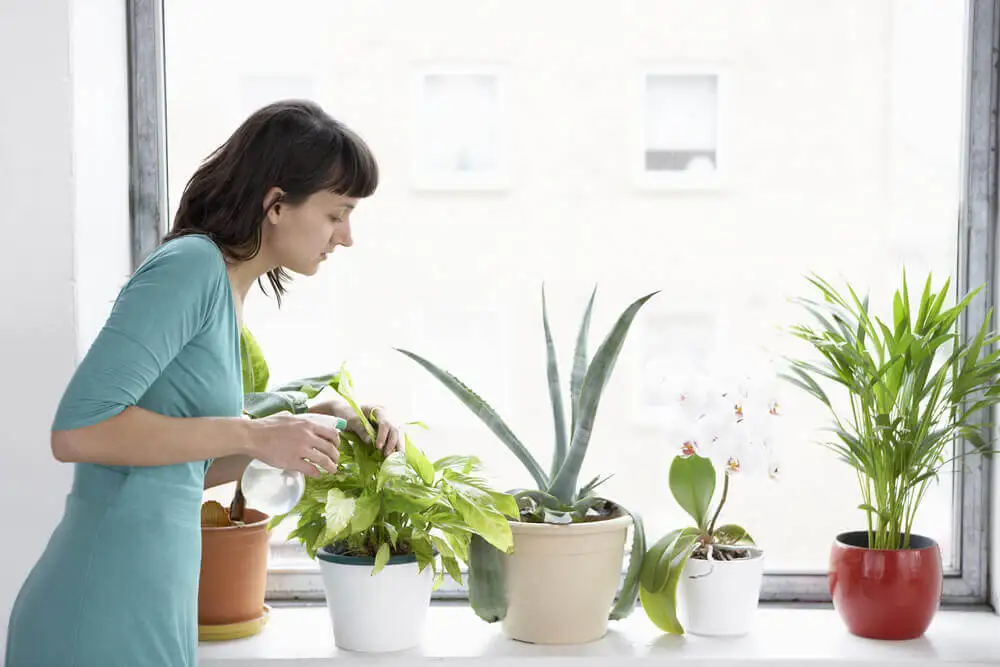The Kentia Palm: A Large and Elegant House Plant

It may seem strange to say that it’s possible to have a species f palm tree inside your home. However, the kentia palm, originally from an island in the Pacific, is an option that grows well both inside and outside the home.
Although this is an endemic species – that is, it only grows naturally on its native island – it can also be found in the United States, Spain, and England. The kentia palm stands out for its elegance, as it has a slender, cylindrical, and ringed trunk, along with a series of fibrous dark green leaves.
These characteristics make it a very attractive specimen for interiors, where it must have considerable space. In any case, it’s very easy to take care of.
What species is the kentia palm?
This is a plant endemic to Lord Howe Island, a piece of paradisiacal land located east of Australia, in the Pacific Ocean. Its scientific name is Howea forsteriana, and it belongs to the family of the Arecaceae – that is to say, the palms. In its natural state, it usually reaches 15 meters in height measuring from the development of its ringed trunk.
As for the leaves, the kentia palm develops flat, pinnate, and fibrous specimens with an attractive dark green tone. In addition, it has brown fruit that later turns reddish.
To understand the optimal conditions for its growth, the place of origin must be observed. In the case of the kentia palm, it’s quite simple, since its only natural growing space is Lord Howe Island.
There, it averages a temperature of 20 degrees Celsius, while maximum temperatures can exceed 30 degrees. Therefore, this palm grows best in tropical environments. However, it also withstands some hours of cold, while it develops well indoors, since it does not require constant direct sunlight.

Care for an indoor kentia palm tree
Having a kentia palm tree in a garden in an area with a warmer climate is fairly easy. It’s enough to offer it a good amount of light exposure, but also some moments of shade, and to water it from time to time. This is especially important when it hasn’t rained for several days or when there are areas where water doesn’t reach.
But although this is a palm tree that can grow to a large size, it’s also suitable for indoor environments. The elegance offered by this specimen makes it perfect for large spaces, with enough room for the development of its leaves.
We think you may also enjoy reading this article: We Recommend 6 Succulent Plants to Decorate Your Home
Sunlight and location
It’s clear that the natural environment for palm trees is outdoors, where they receive direct sunlight. However, the kentia is a specimen that adapts well to the lack of light, so it can also be placed indoors without any problems.
In any case, it’s important that it receives natural lighting through proximity to windows, glass doors, or any other source. This is especially important during the first years of the palm’s life.
Temperature
As already mentioned, the average temperature of its island of origin is 20 degrees Celsius. Therefore, the kentia palm prefers a range between 15 and 25 degrees Celcius.
However, it offers good resistance to colder temperatures, since there can be periods when the temperature drops to 5 degrees Celsius on Lord Howe Island. However, these are short periods. Ideally, it should enjoy a temperate climate and avoid exposure to strong winds or frost.
Kentia palm watering
Both in gardens and indoors, this species tolerates little excess humidity. Therefore, attention should be paid to waterlogging. In the case of outdoor palms, only water it if rainwater doesn’t reach their area or if there are periods of drought.
When it comes to watering an indoor plant, it’s sufficient to water it one and up to three times a week. During the cold months, this frequency should be reduced to only once or twice a month. Keep in mind that, due to its natural conditions, this palm can withstand a period of drought better than soil that is too wet.
Humidity
A very humid substrate can cause the appearance of fungus and various diseases. However, it’s also important to check that there’s no extensive drought.
When the plant is indoors, this usually occurs due to the proximity to different heaters, especially in the winter. In this case, it’s advisable to spray the leaves a little with a sprayer.

Substrate
To favor the optimal development of the plant, it’s best to use a substrate that’s rich in nutrients. It can be organic compost or inorganic fertilizers available at any nursery.
It’s also important to provide well-drained soil. In this way, the roots are aerated and waterlogging is avoided.
Like this article? You may also like to read: How to Make a Moss Guide or Support for Climbing Plants
Diseases
The kentia palm is vulnerable to a series of common diseases, most of them related to fungi due to excess humidity. Therefore, it’s necessary to check that there are no puddles or too much water in the substrate.
It’s also advisable to apply a natural fungicide once or twice a year. This plant is more exposed to the following diseases:
- Spider mite: A small mite that usually appears in the months of greatest drought.
- Mealybugs: These are also linked to heat and drought. This is a pest that is usually combated by spraying potassium soap and hot water.
- Powdery mildew: This is a fungus that manifests itself with white, cottony spots on the leaves.
Growing a kentia palm indoors
One of the reasons many people choose them to decorate interiors is because of their elegant and at the same time exotic appearance. Ater all, not everyone displays a palm tree inside their home.
However, this specimen is ideal to achieve a bold look with natural details. It’s very adaptable and easy to care for.
All cited sources were thoroughly reviewed by our team to ensure their quality, reliability, currency, and validity. The bibliography of this article was considered reliable and of academic or scientific accuracy.
- Kahn F, , Arana C. Las palmeras en el marco de la investigación para el desarrollo en América del Sur. Revista Peruana de Biología [Internet]. 2008;15( 1):3-4. Recuperado de: https://www.redalyc.org/articulo.oa?id=195020250002
- Herraiz, Alba et al. “Developing a New Variety of Kentia Palms (Howea Forsteriana): Up-Regulation of Cytochrome B561 and Chalcone Synthase Is Associated with Red Colouration of the Stems.” Botany Letters 165.2 (2018): 241–247. Disponible en: https://doi.org/10.1080/23818107.2017.1415818
- Moura, Isabel, and Maria Filomena Neves Carneiro. “In Vitro Culture of Immature Embryos of Howea Forsteriana Becc.” Plant Cell, Tissue and Organ Culture 31.3 (1992): 207–209. Disponible: https://doi.org/10.1007/BF00036225
- Oriolani E. J, Moschini R. C, Salas S, Martinez M. I, , Banchero S. Predicción de epidemias del oídio de la vid (Uncinula necator (Schwein) Burrill) mediante modelos basados en factores meteorológicos. Revista de la Facultad de Ciencias Agrarias [Internet]. 2015;47(2):197-211. Recuperado de: https://www.redalyc.org/articulo.oa?id=382842590015
This text is provided for informational purposes only and does not replace consultation with a professional. If in doubt, consult your specialist.








